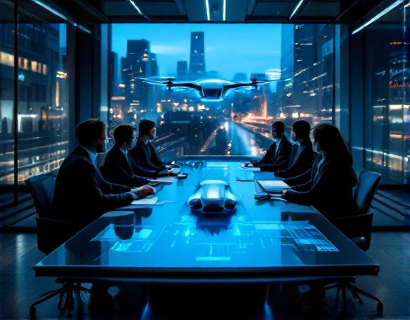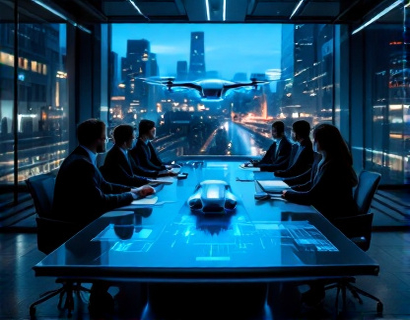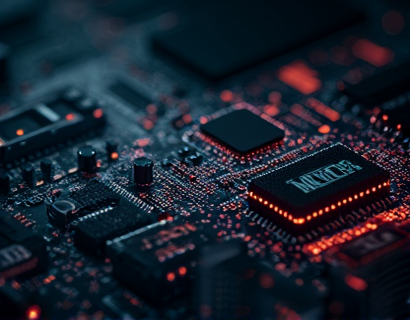AI-Powered Agent Revolutionizes Aeronautics: Streamlining Operations and Enhancing Decision-Making
The aeronautics industry, a cornerstone of global transportation and commerce, is undergoing a transformative shift driven by the integration of artificial intelligence (AI). This revolution is not just about automating tasks but about fundamentally changing how operations are managed and decisions are made. AI-powered agents are at the forefront of this change, offering tailored solutions that streamline operations, boost efficiency, and drive innovation. For industry professionals and businesses, embracing these advanced technologies is crucial for sustainable growth and maintaining a competitive edge in a dynamic market.
Understanding the Role of AI in Aeronautics
AI in aeronautics encompasses a wide range of applications, from predictive maintenance and flight optimization to supply chain management and customer service. These intelligent agents leverage machine learning algorithms, natural language processing, and data analytics to provide insights and automate processes that were previously manual and error-prone. The core advantage of AI in this sector lies in its ability to process vast amounts of data quickly and accurately, enabling real-time decision-making and operational improvements.
Streamlining Operations with AI
One of the most significant impacts of AI in aeronautics is the streamlining of operations. AI agents can monitor and manage complex systems, from airport logistics to aircraft maintenance, with unprecedented precision. For instance, predictive maintenance uses AI to analyze sensor data from aircraft components, identifying potential failures before they occur. This proactive approach reduces downtime, lowers maintenance costs, and enhances overall safety. By automating routine inspections and maintenance schedules, AI allows ground staff to focus on more critical tasks, improving efficiency and productivity.
In airport operations, AI-powered systems optimize the flow of passengers and cargo. Smart scheduling algorithms can adjust flight schedules in real-time based on weather conditions, air traffic, and other variables, minimizing delays and improving punctuality. AI-driven traffic management systems at airports can direct ground vehicles and manage baggage handling with greater efficiency, reducing congestion and enhancing the passenger experience. These advancements not only streamline operations but also contribute to environmental sustainability by reducing fuel consumption and emissions.
Enhancing Decision-Making with Data-Driven Insights
Decision-making in the aeronautics industry is complex and multifaceted, involving numerous stakeholders and data sources. AI agents provide a robust platform for data analysis, offering actionable insights that inform strategic decisions. By integrating data from various domains such as finance, operations, and customer feedback, AI can identify trends, predict outcomes, and suggest optimal courses of action. This data-driven approach ensures that decisions are based on accurate and up-to-date information, reducing the risk of human error and bias.
For example, AI can analyze historical flight data to predict future demand for certain routes, helping airlines adjust their fleet and scheduling accordingly. In the supply chain, AI can optimize inventory levels by forecasting component needs based on maintenance schedules and usage patterns. This level of precision in decision-making not only improves operational efficiency but also enhances financial performance by reducing costs and increasing revenue.
Tailored Solutions for Industry-Specific Challenges
The aeronautics industry faces unique challenges that require specialized solutions. AI agents are designed to address these challenges with tailored approaches. For instance, in the realm of aviation safety, AI can process and analyze vast amounts of safety data to identify potential risks and recommend mitigation strategies. This proactive approach to safety helps airlines and regulatory bodies stay ahead of emerging threats and maintain high safety standards.
In the context of regulatory compliance, AI can automate the monitoring and reporting processes, ensuring that all operations adhere to stringent regulations. By continuously updating knowledge bases with the latest regulatory changes, AI agents help organizations stay compliant without the need for extensive manual oversight. This not only saves time and resources but also reduces the risk of non-compliance penalties.
Driving Innovation through AI
Beyond streamlining operations and enhancing decision-making, AI is a catalyst for innovation in the aeronautics industry. AI-powered agents can explore new possibilities and drive the development of cutting-edge technologies. For example, AI is playing a pivotal role in the design and testing of next-generation aircraft. By simulating thousands of design scenarios and testing conditions, AI can identify the most efficient and effective designs, accelerating the development process and reducing costs.
In the area of autonomous flight, AI is enabling the development of unmanned aerial vehicles (UAVs) and autonomous drones. These technologies have vast applications, from aerial surveillance and delivery services to environmental monitoring and disaster response. AI-driven autonomy ensures that these vehicles can navigate complex environments safely and efficiently, opening up new frontiers in aeronautics.
Case Studies: Real-World Applications of AI in Aeronautics
Several industry leaders have already embraced AI to transform their operations. One notable example is a major airline that implemented an AI-powered predictive maintenance system. By analyzing data from thousands of flights, the system identified patterns that indicated potential engine failures. This allowed the airline to perform maintenance proactively, reducing unscheduled downtime by 30% and saving millions in maintenance costs. The improved reliability also enhanced customer satisfaction, as flight delays were significantly reduced.
Another case involves a leading aircraft manufacturer that utilized AI to optimize its supply chain. By integrating AI-driven demand forecasting and inventory management, the company reduced excess inventory by 25% and improved delivery times. The AI system continuously adjusted inventory levels based on real-time data, ensuring that components were available when needed without overstocking. This optimization not only cut costs but also minimized environmental impact by reducing waste.
Challenges and Considerations
While the benefits of AI in aeronautics are clear, there are challenges and considerations that must be addressed. One primary concern is data security and privacy. Aeronautics involves handling sensitive information, and ensuring the security of AI systems is paramount. Robust cybersecurity measures and compliance with data protection regulations are essential to safeguard against breaches and maintain trust.
Another challenge is the integration of AI with existing systems and processes. Retrofitting legacy systems with AI capabilities can be complex and resource-intensive. Collaboration between technology providers and industry stakeholders is crucial to develop seamless integration solutions that maximize the benefits of AI without disrupting operations.
Future Prospects: The AI-Driven Aeronautics Landscape
The future of aeronautics is increasingly intertwined with AI technology. As AI continues to evolve, we can expect even more sophisticated applications and deeper integrations. One area of focus will be the development of more advanced autonomous systems, including fully autonomous aircraft for specific missions. These advancements will not only enhance efficiency and safety but also open new markets and opportunities.
Additionally, the collaboration between AI and human experts will become more prevalent, creating a synergistic environment where AI augments human capabilities rather than replacing them. This human-AI collaboration will lead to more innovative solutions and a more resilient industry capable of adapting to future challenges.
In conclusion, AI-powered agents are revolutionizing the aeronautics industry by streamlining operations, enhancing decision-making, and driving innovation. By embracing these technologies, industry professionals and businesses can achieve sustainable growth, improve efficiency, and maintain a competitive edge in a rapidly evolving market. The journey towards an AI-enhanced aeronautics sector is just beginning, and the potential for transformation is immense.










































